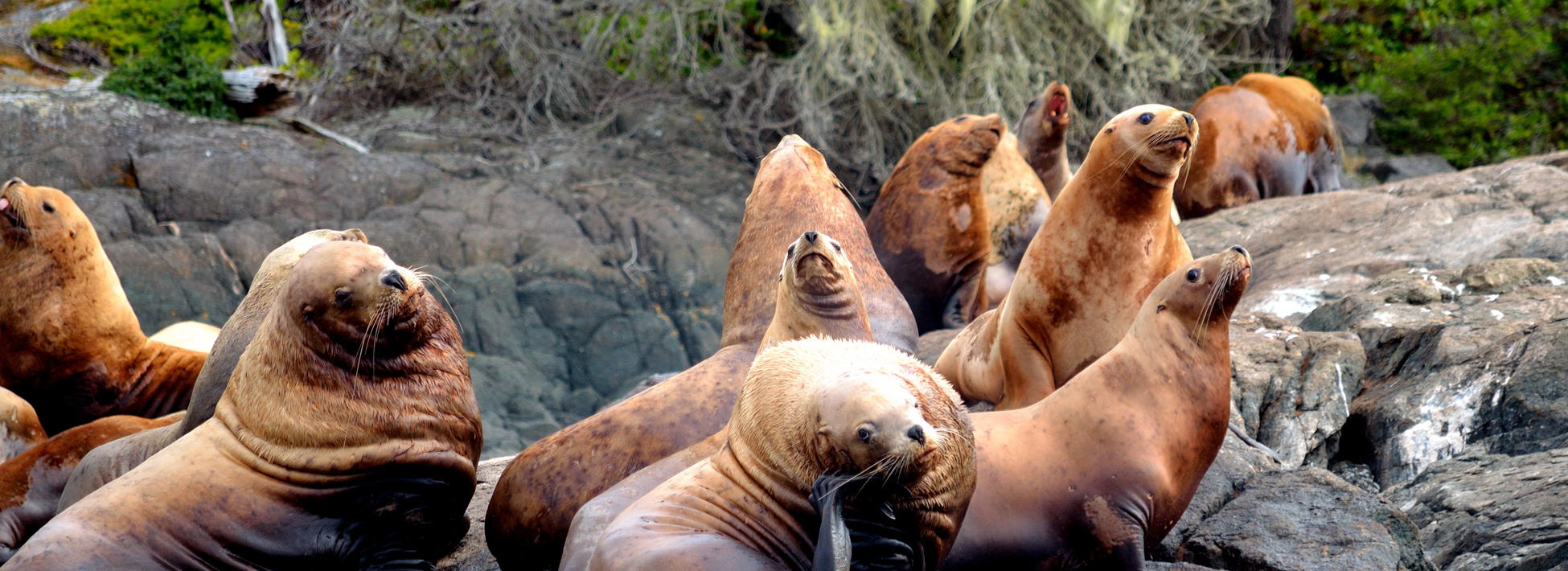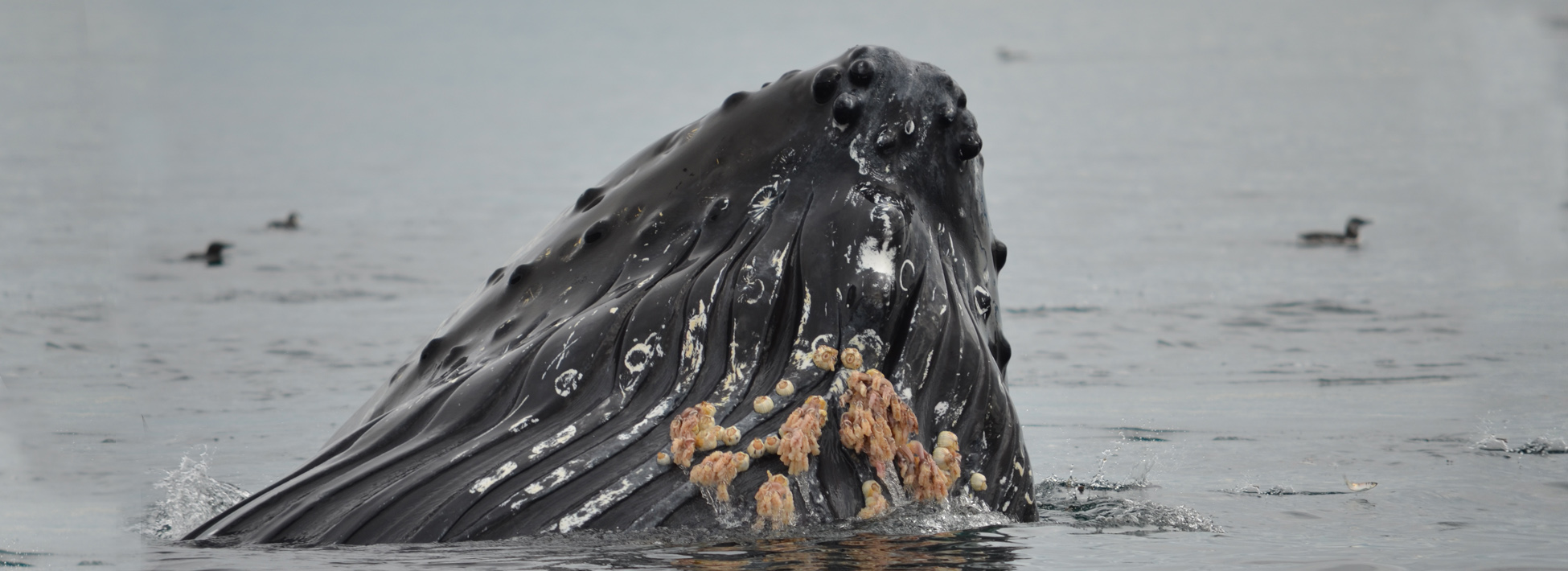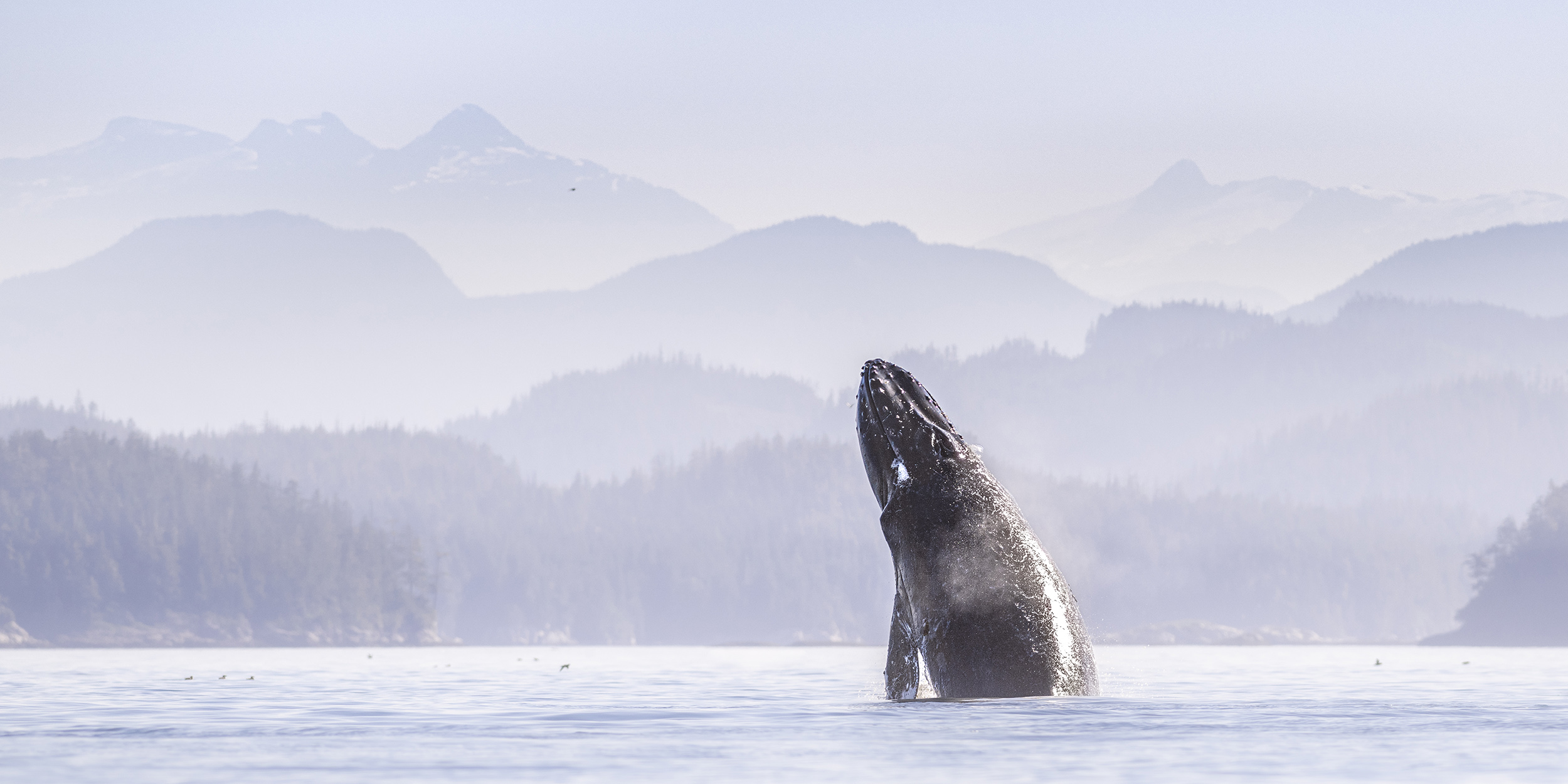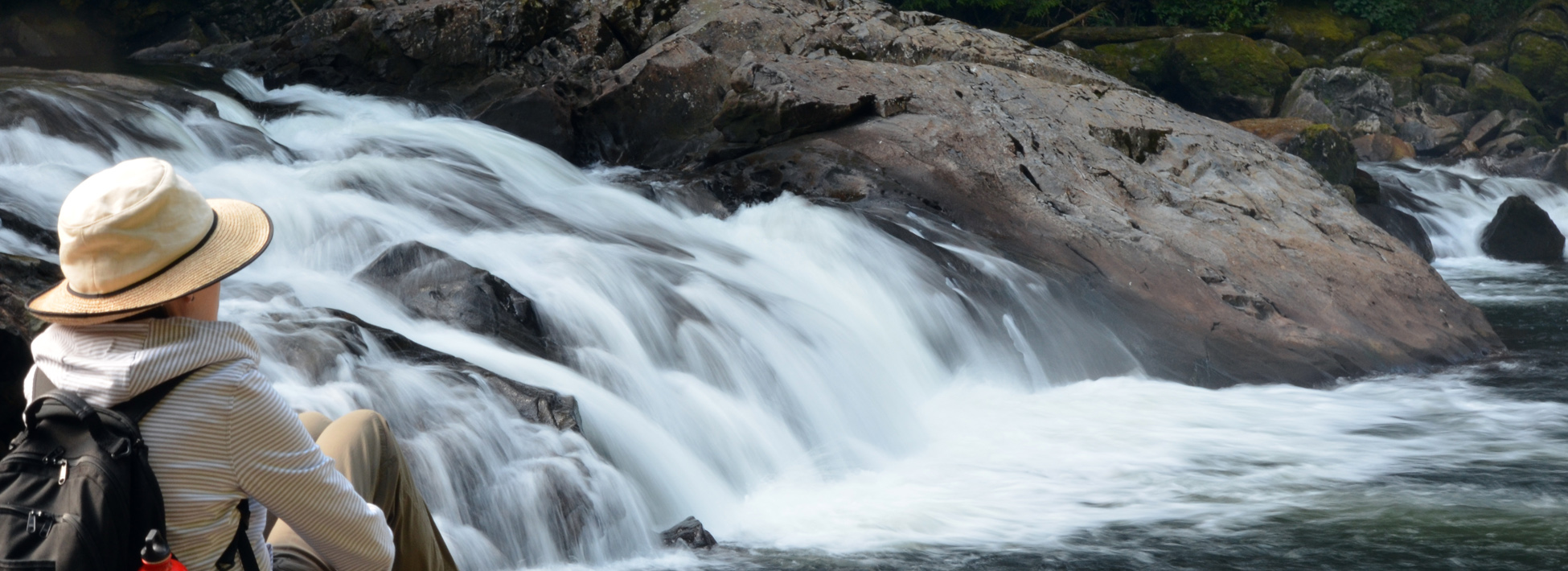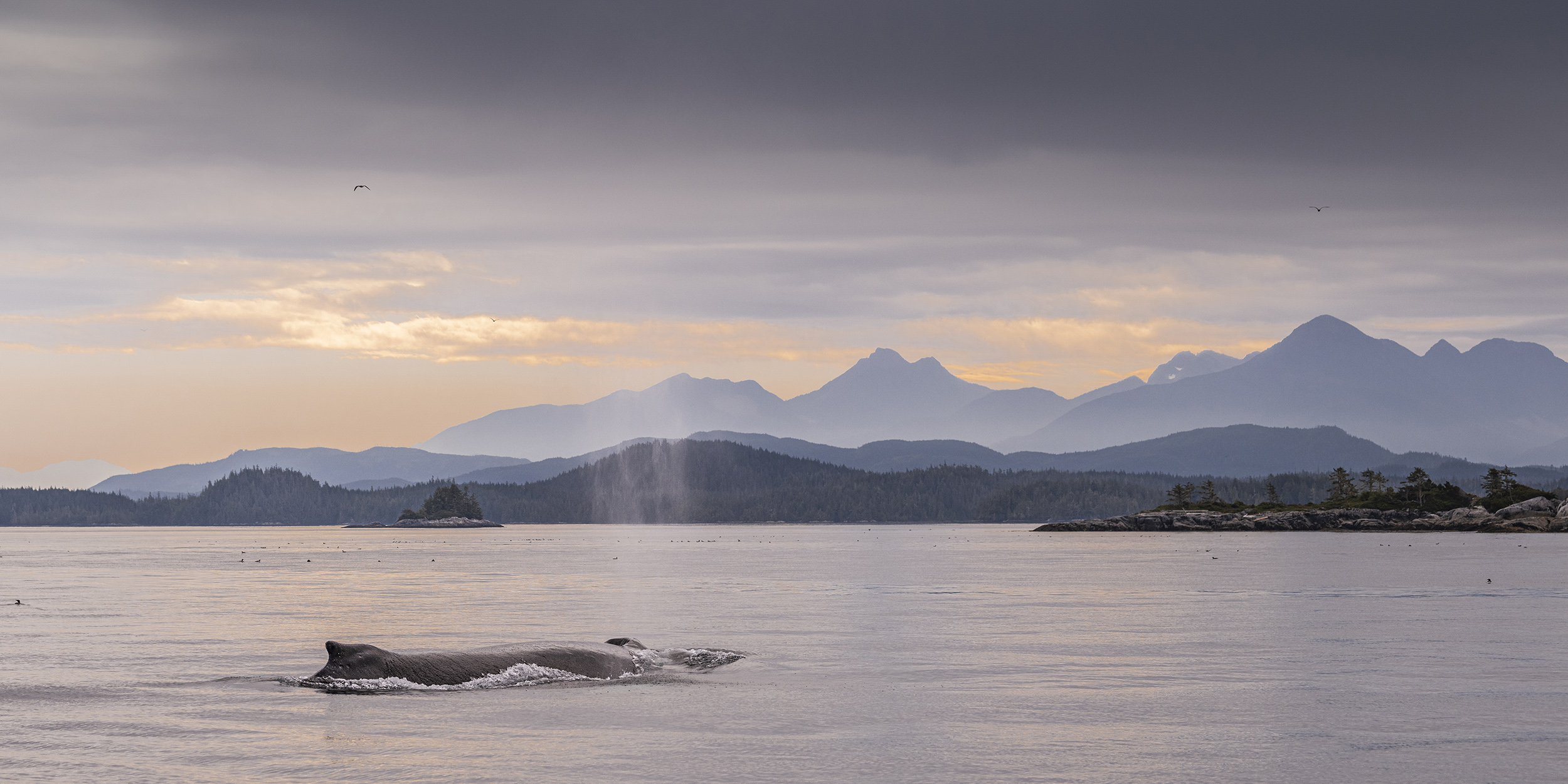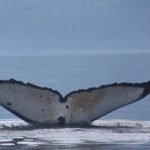The Humpback Whales that frequent the waters near the lodge are migratory. Most of the whales in our area head to Hawaii in the winter to mate and have their calves. Biologists are able to identify these whales by taking pictures of the underside of their fluke (tail). These markings are unique and once the whale is mature will not change. They are catalogued and separated according to region and the percentage of white and dark colours. This whale is known as “Guardian.” She is frequently spotted in our waters and has been returning for several years.
Bald Eagles

Bald Eagles are frequently sighted in our area. At times they can be seen in large numbers. This is usually where food supplies are high. For example this could be in areas with high concentrations of baitfish or along the rivers in the fall when the salmon are spawning. They are not migratory, but do move around with the food supply. As mentioned earlier when the salmon are spawning we often see many along the rivers, while there will be fewer along the coastline. With little need for camouflage their white head and tail feathers can be spotted easily. The female is slightly larger and her white head extends down a bit farther onto the body, but it is subtle. It takes these birds 4.5 – 5 years to acquire this unique plumage. As juveniles they are a brown colour. With exceptional eyesight and the ability to view 270 degrees they are understandably often seen in high perches and in trees near points and passageways.
Visit our Blog